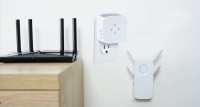What is Home Automation?
House automation, often known as “Smart Home Technology,” is when technology is used to automate your home. You can manage practically every element of your house through the Internet of Things with home automation (IoT).
Home automation began with the creation of the thermostat and has since grown to become one of the largest and fastest-growing technological sectors. The potential of home automation continues to expand. It may be used for home security, appliance management, energy monitoring, personal assistance, caring for the elderly or disabled, and more.
The following are some of the Technologies Powering Smart Home Automation Products
Wi-Fi
Smart home devices are being created to communicate with the home’s existing Wi-Fi networks. In-home automation is one of the most extensively used protocols. It makes use of multiplexing technology to connect smart gadgets. Wi-Fi is a power-hungry protocol that drains a battery-powered network’s batteries faster than other protocols. If you have a lot of devices utilizing your Wi-Fi, adding automated gadgets to the mix might slow them down.
Bluetooth
Another common protocol for home automation is Bluetooth. It has been used for short-distance communication and file sharing by users. It’s commonly seen in light bulbs and smart locks. The nicest aspect about utilizing Bluetooth is that it can be used with various goods that have similar communication capabilities. One such network has expanded fast due to its lower power consumption.
Radiofrequency
Radiofrequency is one of the oldest automation protocols. With a transmitter and a receiver, this protocol may be used to control home appliances. On the transmitter side, the radiofrequency remote is connected to the microcontroller. It transmits ON or OFF orders to the receiver, links to the loads. It is solely utilized to give more simple solutions for remote-controlled appliances. The value of this methodology is significantly reducing due to the evolution of newer techniques.
ZigBee
ZigBee is one of the most sophisticated home automation protocols available. It was first employed for business applications. But recently gained favor in residential settings. It is coupled with comprehensive wireless technology via radiofrequency. It can control several devices at once and is an open technology that allows designers to create interoperable products. It uses less energy and does not require the use of a battery. It’s a highly adaptable, secure home automation protocol.
Z-Wave
The Z-Wave technique is a radiofrequency-based procedure. The Z-wave frequency used for wireless devices is simple to set up and is an energy-saving option. It facilitates communication and is compatible with a variety of brands. There are about 1500 verified Z-wave compatible products on the market. It has a frequency of 908.42 MHZ, which makes it simple to connect to the home device.
Infrared
It’s a well-established technology that we’ve been utilizing for decades. It is the simplest basic protocol and is often used for one-way commands. The remote control is the most common example.
Li-Fi
We’ve all heard of Wi-Fi, but we’ve never heard of li-fi. Light fidelity is abbreviated as Li-Fi. It’s a part of the electromagnetic spectrum that’s employed in communication. It is frequently chosen over Bluetooth, Wi-Fi, and IR, particularly in energy-conscious companies and residences. Instead of radio waves, Li-Fi uses visible light, infrared, and ultraviolet.
 Free Express Shipping
Free Express Shipping
















